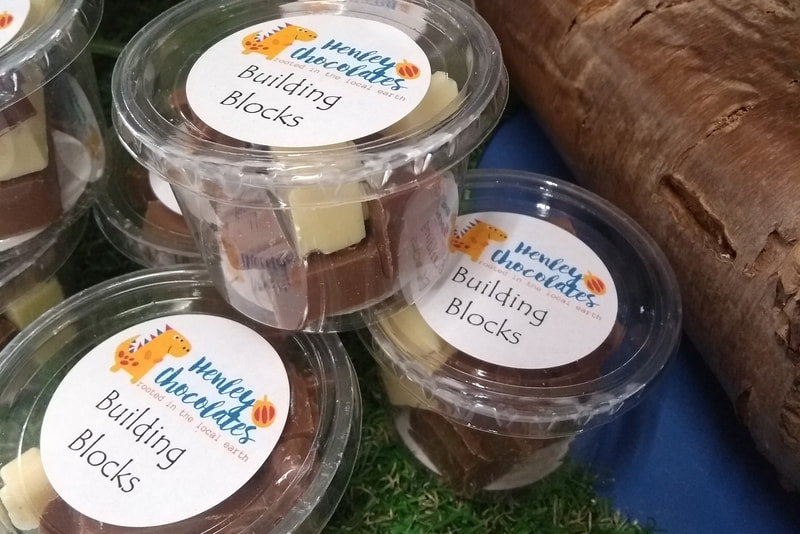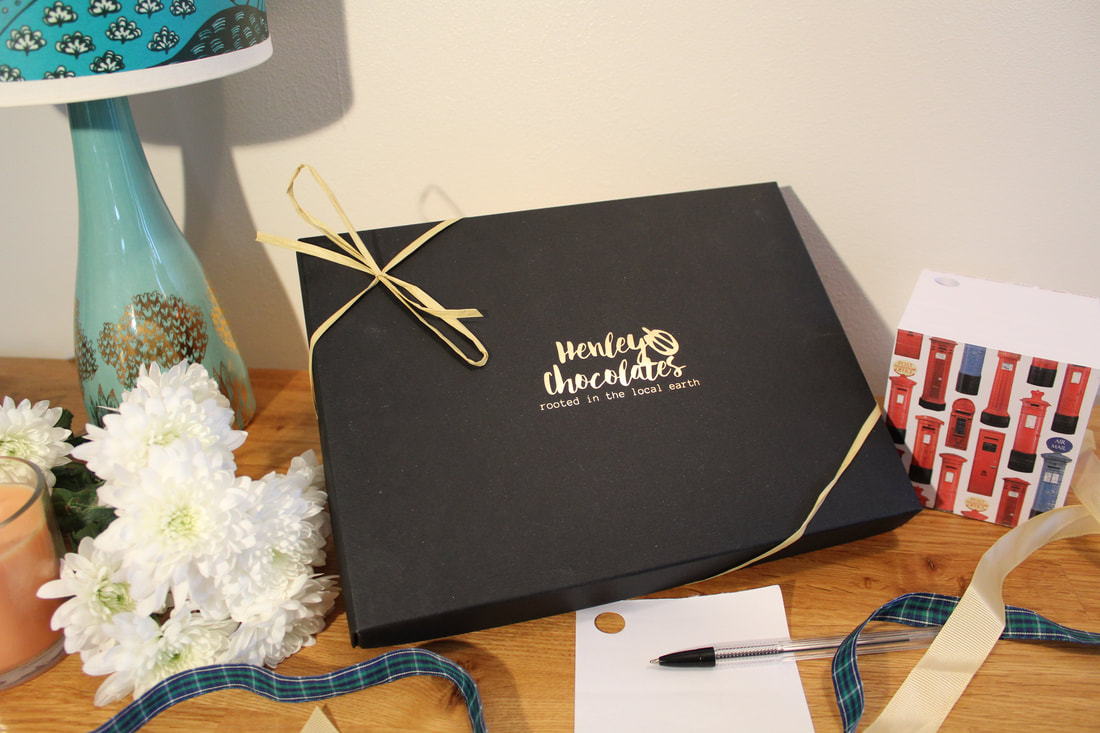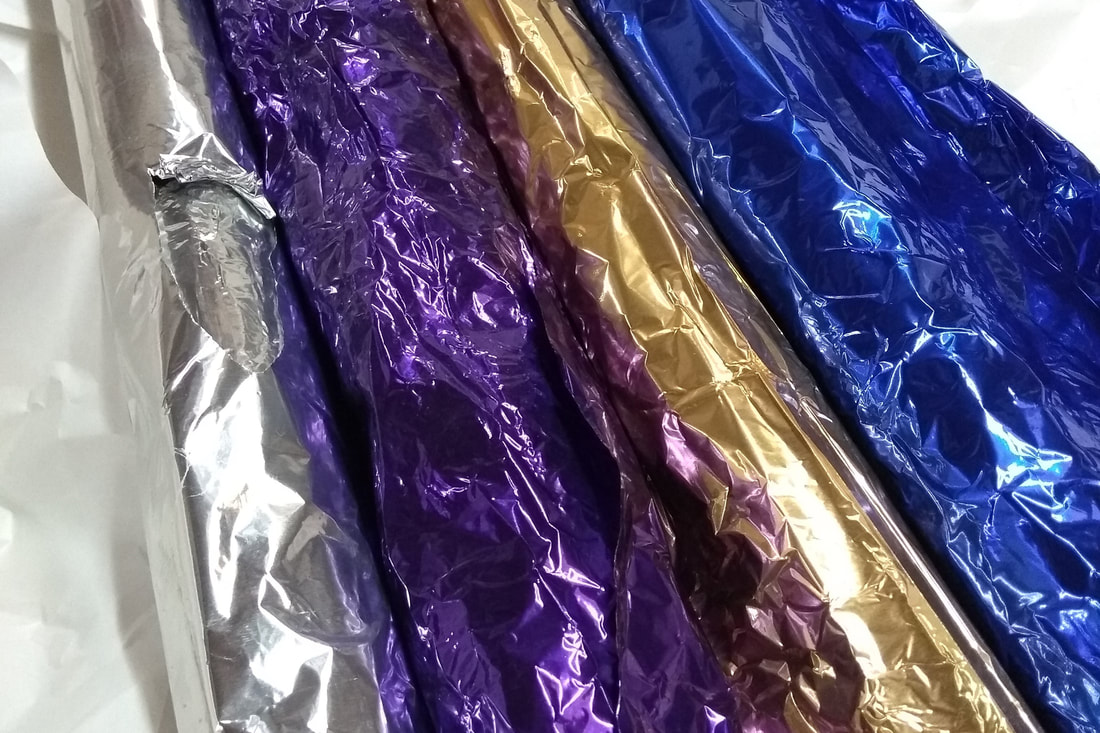Our journey to plastic-free
For many it was the David Attenborough series Blue Planet II (2018) with the shocking episode about the damage plastic waste is doing to our oceans that made us think more carefully about how the products we purchase day-to-day are packaged. But minimising waste and maximising recycling has been at the heart of what we are about at Henley Chocolates from day one… all the way back in 2012!
Every scrap of packaging our supplies are delivered to us in is sorted through- as much as possible is either re-used or recycled (in that order: it is always kinder to the planet to reuse than recycle, which consumes energy). For example, spirits used to flavour our truffles may arrive in glass bottles protected by bubble wrap: this bubble wrap may well be what protects your chocolate egg in the post on its way from us to you, while the glass bottle will be returned or recycled after use (depending on the specifics of the product and supplier).
Every scrap of packaging our supplies are delivered to us in is sorted through- as much as possible is either re-used or recycled (in that order: it is always kinder to the planet to reuse than recycle, which consumes energy). For example, spirits used to flavour our truffles may arrive in glass bottles protected by bubble wrap: this bubble wrap may well be what protects your chocolate egg in the post on its way from us to you, while the glass bottle will be returned or recycled after use (depending on the specifics of the product and supplier).
Did you know...?
If you visit us during the winter months and purchase a real hot chocolate takeaway to drink, the cup it comes in will be fully recyclable. Unlike many highstreet takeaway cups, they do not have a plastic lining. Our hot chocolate cups also come with a fully edible chocolate spoon. No wastage here!
If you visit us during the winter months and purchase a real hot chocolate takeaway to drink, the cup it comes in will be fully recyclable. Unlike many highstreet takeaway cups, they do not have a plastic lining. Our hot chocolate cups also come with a fully edible chocolate spoon. No wastage here!
At the end of 2018, spurred on by horrific images of turtles entangled in plastic waste, and the ever-so persuasive Charlie at Zero Store (now based in Leamington), we started a journey to reduce our reliance on single use plastic in the packaging we use to protect your delicious chocolate (with the aim to completely eliminate it). At first glance you might think ‘just don’t use it’ or ‘just sell everything unwrapped/in paper’... if only it was that simple!
At first, we looked and looked but the options for suitable plastic-free packaging were very limited. As a small business, the cost of commissioning bespoke plastic-free packaging is huge and the minimum order quantities are enormous enough to be prohibitive for the most part at present. In 2020 we commissioned our first bespoke chocolate bar bags made entirely from natural materials shortly followed by the larger-sized bags in 2021. Our entire stock range of advent calendars in 2021 was fully plastic free for the first time, and we even started to produce a fully plastic free 24 chocolate selection box. In 2022 we are excited to have commissioned a new range of kraft card boxes to protect our eggs on their journey to their final tummy / destination.
At first, we looked and looked but the options for suitable plastic-free packaging were very limited. As a small business, the cost of commissioning bespoke plastic-free packaging is huge and the minimum order quantities are enormous enough to be prohibitive for the most part at present. In 2020 we commissioned our first bespoke chocolate bar bags made entirely from natural materials shortly followed by the larger-sized bags in 2021. Our entire stock range of advent calendars in 2021 was fully plastic free for the first time, and we even started to produce a fully plastic free 24 chocolate selection box. In 2022 we are excited to have commissioned a new range of kraft card boxes to protect our eggs on their journey to their final tummy / destination.
An aside: by ‘suitable’ we mean that the packaging needs to protect the chocolate- slab bars and chocolate eggs can be fragile and snap; products sat side-by-side on a shelf need to maintain their distinct flavours; a customer may perhaps want to put their chocolate bar in a bag or pocket on a hot day without having to clean up a sticky mess; and the product’s shelf life must not be reduced. In addition to protection, packaging needs to be the correct dimensions for the product. This is important because we want to do justice to our delicious hand made chocolate by making it look as fabulous as it tastes!
Did you know...?
The term ‘Biodegradable’ only means that a material will break down over time by natural processes. It does not define the time scale for this decomposition though!
The term ‘Compostable’, however, is more clearly regulated: the material must decompose into CO2, water and biomass at a rate comparable to other natural biomaterials. It must do so without leaving any toxic traces in the environment.
The term ‘Biodegradable’ only means that a material will break down over time by natural processes. It does not define the time scale for this decomposition though!
The term ‘Compostable’, however, is more clearly regulated: the material must decompose into CO2, water and biomass at a rate comparable to other natural biomaterials. It must do so without leaving any toxic traces in the environment.
We are on a journey- switching to plastic-free packaging, product-by-product over time. This is a journey we are still walking and will continue to walk- as with everything in life, there is always room for improvement. Some of the plastic-free packaging we’ve tried hasn’t lived up to expectation or a better (more environmentally friendly) option has come available at a later date. For us at Henley Chocolates it is about experimenting with different options, questioning our packaging suppliers and being transparent with our customers.
So what are the materials used to package your chocolate?
Clear Natureflex bags
What are they made of?
These bags look very similar to their plastic counterparts but are in fact made from cellulose derived from wood-pulp, sourced from responsibly-managed forests. The trade name for the material is NatureFlex. It is both biodegradable and compostable.
These bags look very similar to their plastic counterparts but are in fact made from cellulose derived from wood-pulp, sourced from responsibly-managed forests. The trade name for the material is NatureFlex. It is both biodegradable and compostable.
How should I dispose of them?
Either put them in your *food* recycling bin (if your council provide a food waste recycling scheme) or your normal waste bin. In the former they will be converted to compost which can nurture new growth and in the later they will degrade in a landfill and do no lasting harm to the earth.
Clear tubs
|
What are they made of?
You may think these cute little tubs (made by Vegware) are conventional petroleum-based plastic, but in fact they start their lives as plant sugars extracted from milled corn. The sugars are fermented before being processed. The resulting material is called PLA (Polylactic acid). |
How should I dispose of them?
Either put them in your normal waste bin or take them to a specialist Vegware composting facility. In the former they will degrade in a landfill and do no lasting harm to the earth; and in the latter they are converted to compost which nourishes new growth.
NOTE: in the UK, do not dispose of Vegware pots in your food recycling bin.
Either put them in your normal waste bin or take them to a specialist Vegware composting facility. In the former they will degrade in a landfill and do no lasting harm to the earth; and in the latter they are converted to compost which nourishes new growth.
NOTE: in the UK, do not dispose of Vegware pots in your food recycling bin.
Card
|
Products:
Tags which label many items, Boxes for 100 and 500 g chocolate bars, Advent calendars, The outers of selection boxes, Easter egg boxes How should I dispose of it?
All our card is fully recyclable (ie not plastic coated) and hence can go in your household recycling bin. Or, if you are creatively inspired, it can be reused in a craft project! |
Foil
|
Products:
Chocolate eggs, Truffles in Advent calendars, Some of our chocolate shapes. How should I dispose of it? The pretty aluminium foil is fully recyclable and hence can go in your household recycling bin. Or, if you are creatively inspired, it can be reused in a craft project: far too good to waste all that pretty shininess! |












